1. The Tragic Plane Crash
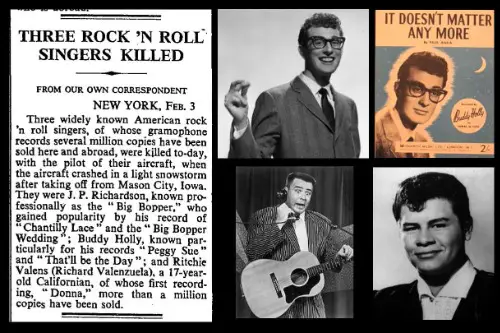
On February 3, 1959, a plane crash claimed the lives of three rock ‘n’ roll legends: Buddy Holly, Ritchie Valens, and J.P. “The Big Bopper” Richardson. This event has been forever immortalized in Don McLean’s song “American Pie,” which referred to the day as “the day the music died.” The crash took place near Clear Lake, Iowa, when the small aircraft, a Beechcraft Bonanza, went down shortly after takeoff from the Mason City Municipal Airport. The pilot, Roger Peterson, was reportedly not experienced in flying at night or in icy conditions, which contributed to the tragedy. Years later, TIME Magazine wrote an emotional article sharing the story.
The three musicians had been touring together as part of the “Winter Dance Party” tour, which was plagued by problems like cold weather, poor equipment, and long travel times. Holly had chartered the plane for the trio to avoid a long bus ride to their next stop in Fargo, North Dakota. Tragically, they never made it. The loss of these pioneering musicians left a void in the rock ‘n’ roll world, and the crash is often seen as the end of an era in early rock music.
2. The Rise of Buddy Holly
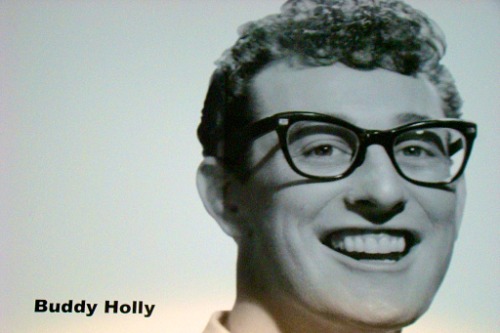
Buddy Holly, just 22 years old at the time of his death, was already considered one of the most influential figures in rock ‘n’ roll history. He was known for his unique sound, blending rockabilly with rhythm and blues, and his innovative use of the electric guitar. Holly’s hits like “That’ll Be the Day” and “Peggy Sue” helped define the early days of rock music. His ability to write and perform his own songs set him apart from many of his contemporaries.
Holly’s career, though tragically short, had a huge impact on the music industry. He was a precursor to the British Invasion, influencing future stars like The Beatles, The Rolling Stones, and Bob Dylan. Even Paul McCartney admitted that without Buddy Holly, The Beatles’ history might have been completely different, the London Evening Standard reports. Holly’s death, coming so soon after he had achieved mainstream success, was a significant blow to the music world, but his legacy lived on in the artists who followed in his footsteps.
3. Ritchie Valens: The Teen Idol
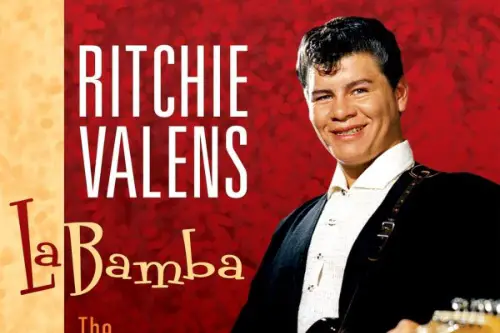
Ritchie Valens, at just 17 years old, had already made a name for himself with hits like “La Bamba” and “Donna.” His Latin-infused rock ‘n’ roll sound was groundbreaking, blending Mexican folk music with rock. Valens’ “La Bamba” became a hit single, earning him widespread recognition, and he was on his way to becoming a major star when the plane crash took his life. His death marked the loss of a talented young musician who was beginning to break down racial and cultural barriers in the music industry, Rolling Stone magazine shares.
Valens’ story is particularly poignant because of his youth and the fact that he had so much potential. His tragic end helped fuel a sense of lost opportunity in the rock music world. Valens became a symbol of the “what could have been” in terms of musical innovation. In the years following his death, his legacy grew, and in 1987, he was inducted into the Rock and Roll Hall of Fame. His influence on rock music and Latin American culture remains significant, especially through the continuing popularity of “La Bamba.”
4. J.P. Richardson: The Big Bopper
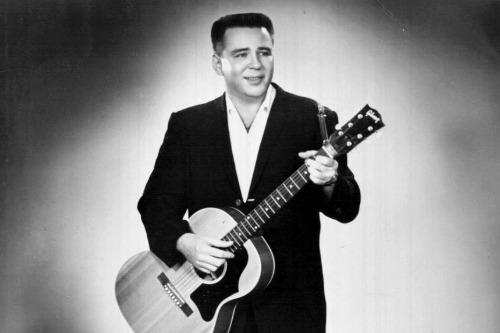
J.P. “The Big Bopper” Richardson was a larger-than-life personality known for his hit song “Chantilly Lace,” which combined rock, blues, and comedic elements. At 28, Richardson had already made a big impact with his energetic performances and distinctive voice. He was not just a musician but also a DJ, gaining fame for his charismatic persona. His death, like the others, left a void in the burgeoning rock ‘n’ roll scene, and his absence from the music world is still felt today, according to the Texas State Historical Association.
Richardson was known for his playful sense of humor, which made him a fan favorite. He was part of the “Winter Dance Party” tour with Holly and Valens, which was marked by struggles with cold weather and poor conditions. Despite the challenges, Richardson remained positive and upbeat, even recording a playful phone call with his wife before the fatal flight. His untimely death at such a young age underscored the fragility of life in the fast-moving world of rock ‘n’ roll, and his loss remains part of the enduring story of “the day the music died.”
5. The Plane’s Ill-Fated Journey
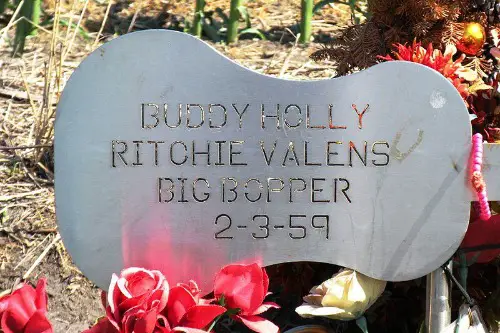
The flight itself was doomed from the start. The pilot, Roger Peterson, was an experienced flight instructor but was not qualified to fly the plane under instrument conditions, which may have led to confusion when the weather turned bad, CNN reports. The night was clear, but icy conditions and poor visibility played a significant role in the crash. It’s believed that Peterson became disoriented in the dark and lost control of the plane.
The flight’s brief journey ended tragically just five miles from the airport. Weather reports had been forecasting poor conditions, but the decision was made to take off anyway. The crash site, which was on a snowy field, wasn’t discovered until the next morning. The impact of the plane crash was immediate and devastating. The music world was rocked by the loss of three incredibly promising artists in the blink of an eye. The mystery surrounding the exact cause of the crash has lingered for years, but the factors of weather, the pilot’s inexperience, and the plane’s malfunction have remained central to the investigation.
6. The Winter Dance Party Tour
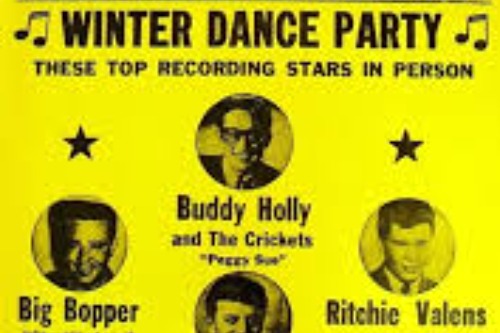
The “Winter Dance Party” tour was plagued with difficulties long before the crash. Starting in January 1959, the tour featured Buddy Holly, Ritchie Valens, and J.P. Richardson, along with other performers like Dion and the Belmonts. The tour was famous for its grueling schedule, long bus rides in freezing temperatures, and faulty heating systems in the buses. The performers were exhausted and frustrated by the harsh conditions, making the decision to charter a plane for the next leg of the tour seem like a relief.
Despite the brutal circumstances, the tour had a lot of energy, and the musicians managed to create unforgettable performances, gaining new fans along the way. The tour was supposed to continue after the crash, but with the deaths of Holly, Valens, and Richardson, it was canceled, leaving fans in shock and mourning. The image of the ill-fated “Winter Dance Party” has become a symbol of the hardships rock stars faced on the road during the early days of rock ‘n’ roll.
7. The Legacy of “The Day the Music Died”
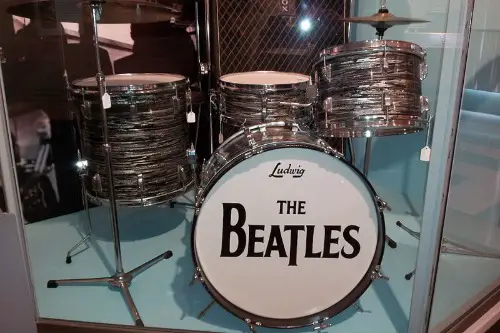
The phrase “The Day the Music Died” has taken on legendary status over the years, becoming a shorthand for the moment rock ‘n’ roll lost its innocence. The death of Buddy Holly, Ritchie Valens, and J.P. Richardson marked the end of an era in the music industry. However, their influence lived on far beyond that tragic day. Holly’s innovative style, Valens’ cultural bridge-building, and Richardson’s larger-than-life persona left an indelible mark on music history.
In the years since, their music has been rediscovered by new generations of fans. Buddy Holly’s work with The Crickets inspired countless rock bands, including The Beatles, while Ritchie Valens became a hero to the Chicano community. J.P. Richardson’s distinctive style and humor still resonate, and he is remembered as one of rock’s early greats. The loss of these three talented individuals helped solidify the notion that the “music died” on February 3, 1959, but their legacy ensures it will never be forgotten.
8. The Aftermath for the Music Industry
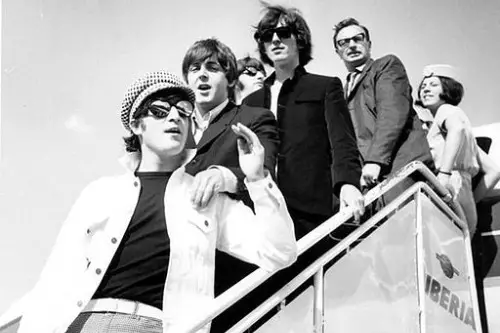
The tragic deaths of these three stars sent shockwaves through the music industry, making the risks of fame and life on the road more apparent. While the crash may have ended the “Winter Dance Party” tour, the industry itself wasn’t slowed for long. In fact, the sudden loss of Holly, Valens, and Richardson brought about an increased awareness of the dangers musicians faced when touring.
The incident also led to changes in how tours were planned and how much safety was prioritized for musicians. Though tragic, the crash did create a greater sense of urgency for the industry to ensure the safety of performers traveling from venue to venue. It also marked the beginning of the end of the era of touring rock stars in the way that Holly and others had done it. Safety protocols would slowly begin to evolve after that.
9. The Song “American Pie” and its Impact
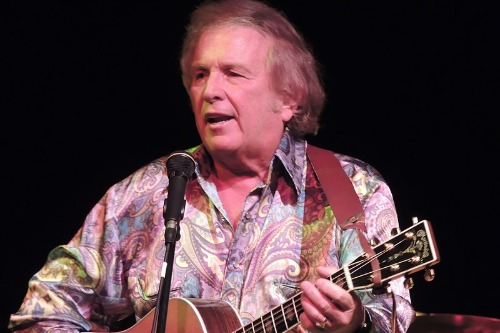
Don McLean’s 1971 hit “American Pie” immortalized the plane crash and is often the first thing people think of when they hear about “the day the music died.” McLean’s lyrics captured the cultural significance of the tragedy and the way it symbolized the loss of innocence in rock music. The song itself became a defining anthem for a generation coming to terms with the changing landscape of music and culture.
McLean’s references to “the day the music died” in the song encapsulate the emotional response to the crash. It represents not just the loss of three talented musicians but also the end of an era where rock music felt like it was still in its purest, most exciting form. The impact of the song itself has kept the memory of the crash alive for decades, ensuring that future generations understand the profound impact the loss of these musicians had on the music world.
10. The Unlikely Survivors
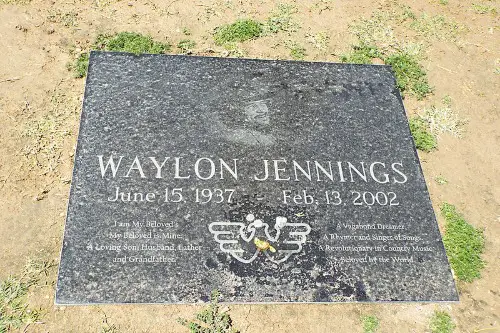
While the crash took the lives of Buddy Holly, Ritchie Valens, and J.P. Richardson, several others who were involved in the tour were spared. One of the most notable survivors was Waylon Jennings, who was part of the tour’s band and had been scheduled to fly on the ill-fated plane. However, he gave up his seat to “The Big Bopper” Richardson, who wasn’t feeling well and needed a rest.
Jennings had a long and successful career in country music after the crash, but he always carried the weight of that decision with him. Another survivor was Dion DiMucci of Dion and the Belmonts, who had also been part of the tour but was not on the plane. The surviving musicians had to come to terms with the overwhelming guilt and grief of losing their friends, but they carried on their careers and contributed greatly to the music industry in their own right.
11. The Investigation and Inconclusive Results
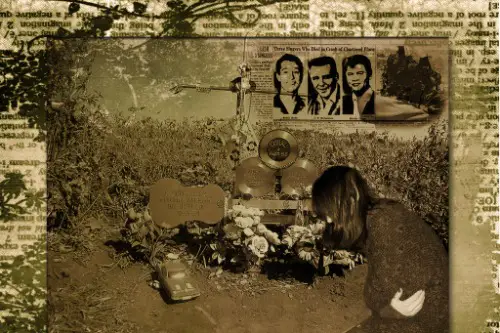
The investigation into the crash concluded that the probable cause was pilot error, likely stemming from a combination of inexperience with flying in poor conditions and disorientation due to the weather. However, there were some questions that remained unanswered, leading to speculation and conspiracy theories. Some people believed that mechanical failure or even sabotage could have contributed to the crash, but no solid evidence emerged to support those ideas.
The fact that the investigation did not definitively pinpoint the cause of the crash left many to wonder what really happened that night. Despite this, the general consensus remains that the combination of poor weather, the pilot’s lack of experience, and possible confusion in the cockpit contributed to the fatal crash. The ongoing mystery surrounding the event only added to its mystique and solidified the day’s place in rock ‘n’ roll history.
12. Remembering the Legends

In the years since the crash, Buddy Holly, Ritchie Valens, and J.P. Richardson have been remembered through various tributes, memorials, and celebrations of their music. Annual gatherings in Clear Lake, Iowa, draw fans to the crash site to honor the memory of these stars. Holly’s home town of Lubbock, Texas, has also become a center of tribute, with a Buddy Holly Center dedicated to preserving his legacy.
The lasting impact of their music continues to resonate today, as their songs are still played on the radio and covered by new generations of artists. Whether it’s through tributes in film, television, or music, Buddy Holly, Ritchie Valens, and J.P. Richardson remain icons whose deaths didn’t end their influence but only cemented their place in history. Their contributions to music are immortal, and they continue to inspire musicians and fans around the world.


